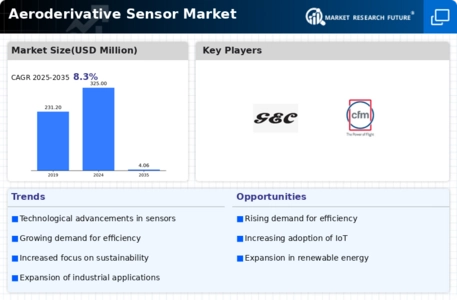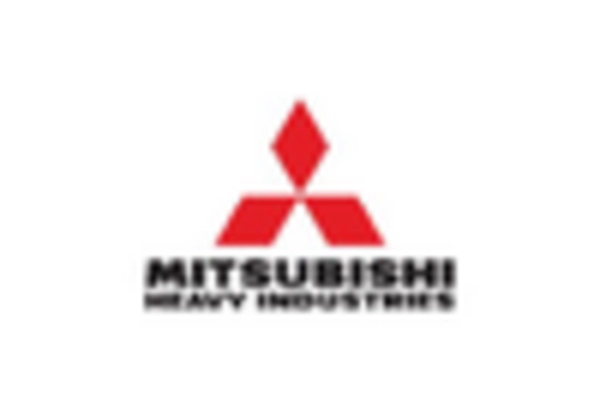Sustainability Initiatives
The Aeroderivative Sensor Market is increasingly influenced by sustainability initiatives, as organizations strive to reduce their environmental footprint. Sensors play a crucial role in monitoring emissions and optimizing energy consumption, thereby supporting sustainability goals. The demand for sensors that can provide real-time data on energy efficiency is on the rise, particularly in sectors such as manufacturing and transportation. According to recent estimates, the market for environmentally friendly sensors is expected to grow by 15% annually, reflecting a shift towards greener technologies. This trend not only enhances operational efficiency but also aligns with regulatory requirements aimed at reducing carbon emissions, further propelling the growth of the Aeroderivative Sensor Market.
Increased Automation in Industries
The Aeroderivative Sensor Market is significantly impacted by the trend of increased automation across various sectors. As industries adopt automated systems to enhance productivity and reduce operational costs, the demand for reliable sensors becomes paramount. These sensors are integral to monitoring and controlling automated processes, ensuring optimal performance and safety. The rise of Industry 4.0, characterized by smart factories and interconnected devices, is driving the need for advanced sensor technologies. Market analysts project that the automation sector will contribute to a substantial portion of the Aeroderivative Sensor Market, with an anticipated growth rate of 10% over the next few years, as companies seek to leverage automation for competitive advantage.
Rising Demand for Aerospace Applications
The Aeroderivative Sensor Market is witnessing a notable increase in demand for aerospace applications, driven by the need for enhanced safety and performance. Sensors are critical in aircraft systems for monitoring various parameters, including temperature, pressure, and vibration. The aerospace sector is increasingly adopting aeroderivative sensors to improve operational efficiency and ensure compliance with stringent safety regulations. Recent data indicates that the aerospace segment is expected to account for over 30% of the total market share by 2026, reflecting a robust growth trajectory. This trend is likely to be fueled by advancements in sensor technology that enable more accurate and reliable data collection, thereby enhancing overall aircraft performance.
Growing Investment in Research and Development
The Aeroderivative Sensor Market is benefiting from growing investment in research and development (R&D) activities. Companies are increasingly allocating resources to innovate and develop next-generation sensors that meet the evolving needs of various industries. This focus on R&D is essential for maintaining competitive advantage and addressing challenges such as sensor accuracy and durability. Recent reports suggest that R&D spending in the sensor market is projected to increase by 12% annually, indicating a strong commitment to innovation. This investment is likely to lead to breakthroughs in sensor technology, further driving the growth of the Aeroderivative Sensor Market as new applications and functionalities are developed.
Technological Advancements in Aeroderivative Sensors
The Aeroderivative Sensor Market is currently experiencing a surge in technological advancements, which are pivotal in enhancing sensor performance and reliability. Innovations such as miniaturization and integration of advanced materials are leading to more efficient sensors. For instance, the introduction of MEMS (Micro-Electro-Mechanical Systems) technology has enabled the development of highly sensitive sensors that can operate in extreme conditions. This trend is expected to drive market growth, as industries increasingly adopt these advanced sensors for applications in aerospace, automotive, and energy sectors. The market is projected to witness a compound annual growth rate (CAGR) of approximately 8% over the next five years, indicating a robust demand for cutting-edge sensor technologies.


















Leave a Comment